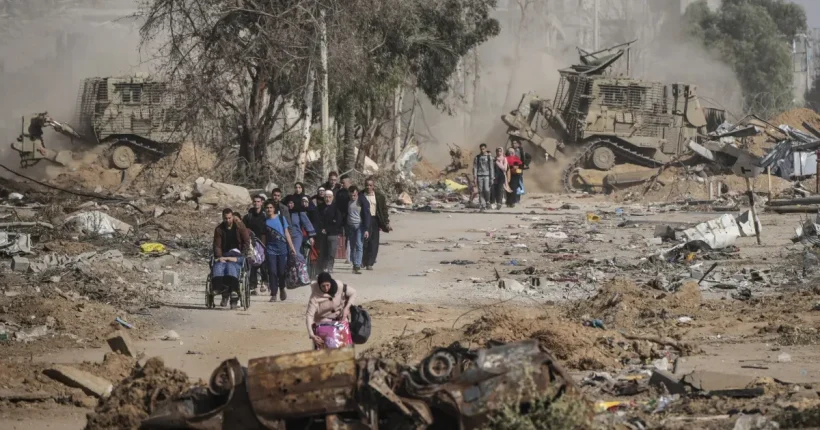

Not by war announcements but by the quiet boom of fighter planes and the exact wrath of drone attacks, the subcontinent was pushed into a renewed chapter of battle in the early weeks of May 2025. Launched by India, Operation Sindoor is a large-scale military campaign that represents one of the most notable escalations in Indo-Pak ties in recent years.
What began as a response to a horrible terror assault swiftly developed into one of the most technologically advanced battles between two nuclear-armed rivals. As the dust settles, concerns about deterrence, diplomacy, and the future of South Asian security loom larger than ever.
Trigger: The Pahalgam Massacre
On April 22, 2025, a terrible terror assault in Pahalgam, Jammu & Kashmir, took the lives of 28 civilians, predominantly Hindu vacationers. This was one of the bloodiest nonmilitary attacks in the area in the last ten years. Indian intelligence agencies’ early probes linked the assault to Jaish-e-Mohammed and Lashkar-e-Taiba, two terrorist groups said to be operating from Pakistan-administered Kashmir with active backing from across the border.
This was a provocation that called for a measured reaction, not only another assault.
Operation Sindoor: Goals and Implementation
Operation Sindoor was initiated by the Indian Air Force (IAF) on May 7, 2025, as a multi-pronged preemptive strike on known terrorist bases in:
• Kashmir under Pakistan administration
• Punjab Province, Pakistan
• Strategic cross-border logistical points
The operation’s nomenclature Sindoor, traditionally representing sacred protection was both symbolic and strategic, aiming to signify India’s red line against cross-border terrorism.
Key Features of the Operation:
• Air Power Dominance: India deployed Rafale fighter jets armed with SCALP cruise missiles and Hammer bombs, allowing deep-penetration precision strikes.
• Drone Warfare: SkyStriker loitering munitions and surveillance drones enabled real-time target monitoring and destruction.
• Missile Launches: Several BrahMos missiles were reportedly utilized to hit high-value targets including arms stockpiles and training sites.
According to Indian officials, approximately 100 militants were killed, including agents engaged in the Pulwama 2019 and IC-814 hijacking crimes. Infrastructure used for radical training and logistics was demolished in at least nine confirmed attack zones.
Pakistan’s Retaliation: Operation Bunyan al-Marsus
In response, Pakistan launched Operation Bunyan al-Marsus on May 10, targeting Indian military and urban targets, including:
• New Delhi (attempted)
• Jammu and Srinagar (confirmed)
• Indian Air Force bases in Pathankot and Gwalior (thwarted)
While the Pakistani strikes did considerable structural damage, India’s missile defense systems, particularly the S-400 Triumfand Barak-8, intercepted a significant number of approaching drones and missiles.
The counterattack represented the first full-fledged drone clash between India and Pakistan, suggesting a worrisome shift in South Asia’s military dynamics.
Ceasefire and International Mediation
Fearing further escalation, including a nuclear standoff, the United States and the United Arab Emirates stepped in to mediate a ceasefire by the night of May 10, 2025. Both India and Pakistan claimed victory, although no official war declaration was made by either side.
However, despite the truce, Indian Defense officials confirmed that Operation Sindoor is ongoing in specific places, targeting residual threats and destroying launch pads remaining functioning along the Line of Control (LoC).
Humanitarian Consequences
As with all military conflicts, civilians took a tremendous brunt. Shelling in border areas of Poonch, Rajouri, and sections of Punjab resulted in:
• Thousands of evacuations
• Infrastructure destruction
• Restricted access to food and medicine
Reports from Reuters indicate that many villagers are afraid to return home, citing worries of another round of retaliatory strikes and disbelief in the ceasefire’s duration.
Strategic and Diplomatic Significance
Operation Sindoor is more than a military maneuver—it is a strategic message. India has made it plain that terror attacks emanating from Pakistani soil will be handled with prompt and severe retribution. The use of high-tech aerial and drone warfare suggests a doctrinal shift from strategic restraint to pre-emptive defense and surgical neutralization.
From a diplomatic standpoint, India has refused to resume “normal relations” with Pakistan unless actual, verifiable action is made to dismantle terrorist infrastructures within its borders. This has been mirrored by statements from the Indian Ministry of External Affairs, emphasizing:
“Peace cannot coexist with terror infrastructure thriving in the neighborhood.”
Current Developments (as of May 12, 2025)
• Operation Sindoor is continuing, with Indian Air Force jets performing targeted strikes along infiltration pathways in Rajouri and Poonch.
• Pakistan denies sheltering terrorists, calling the Indian strikes a “violation of sovereignty,” while simultaneously sustaining severe damage to its border infrastructure.
• International monitors are now keenly observing the region, cautious of the shaky ceasefire and the potential for fresh flare-ups.
Conclusion: A Calculated Message
Operation Sindoor marked a watershed in India’s counter-terrorism strategy. It sends an unmistakable message: India will not absorb terror passively. With greater military capacity, political resolve, and international cooperation, India has demonstrated that punitive deterrence is now a cornerstone of its national defense doctrine.
Yet, with both nations still mired in distrust and enmity, the route ahead remains uncertain. Whether this operation leads to serious counter-terror changes or simply another respite before the next storm only time will tell.
By Rehaan Raj
(KPP News)
You May Also Like
-
May 14, 2025
-
May 14, 2025
-
Sep 20, 2022
-
Aug 20, 2022



